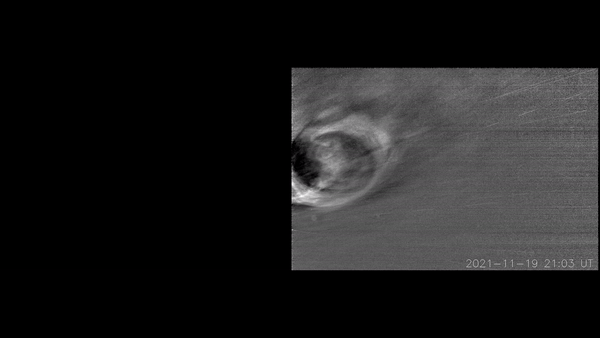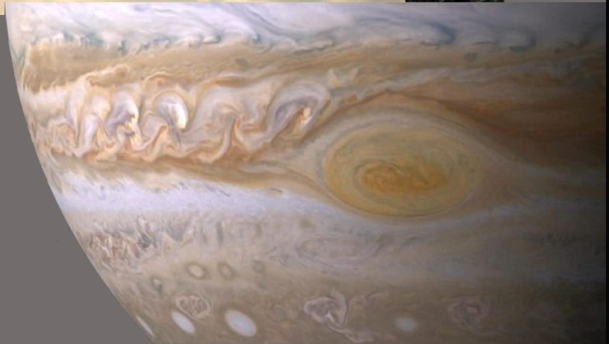The Parker Solar Probe has been traveling as close to the Sun as it possibly can, and this gives it an incredible vantage point to witness the behavior of the Sun up close – sometimes directly into the events of the solar atmosphere, like this first incredible footage capturing the interaction between a coronal mass ejection and the background ambient solar wind.
Coronal mass ejections are major releases of plasma from the Sun, and they can cause geomagnetic storms if they hit Earth. They can disrupt the normal flow of the solar wind, the stream of charged particles that escape from the Sun. Parker is showing one way that happens.

A series of images from PSP showing the peculiar interactions in the solar plasma.
Image credit: U.S. Naval Research Laboratory
Photos from the Wide-field Imager for Parker Solar Probe (WISPR) show the formation of Kelvin-Helmholtz instabilities (KHI) within the plasma. These are seen in the clouds of our atmosphere, as well as in other fluids when an instability related to a velocity difference occurs. They are trains of crescent waves, and are also seen on Jupiter and Saturn – and clearly they can also happen in the Sun, despite the fact that the team was not expecting to see them.
“We never anticipated that KHI structures could develop to large enough scales to be imaged in visible light CME images in the heliosphere when we designed the instrument,” Angelos Vourlidas, a WISPR Project Scientist, said in a statement.

KHI just to the left of the Great Red Spot on Jupiter
Image Credit: NASA
“These fine detail observations show the power of the WISPR high sensitivity detector combined with the close-up vantage point afforded by Parker Solar Probe’s unique sun-encounter orbit,” said Mark Linton, the Principal Investigator for the WISPR instrument.
WISPR is the only imaging instrument on Parker Solar Probe and it never looks at the Sun. The probe is so close to our star that just pointing the camera at the Sun would cook its insides. However, looking off to the side provides these fantastic insights that allow us to better understand the behavior of CMEs and how they affect the space weather around Earth.
“The direct imaging of extraordinary ephemeral phenomena like KHI with WISPR/PSP is a discovery that opens a new window to better understand CME propagation and their interaction with the ambient solar wind,” added Evangelos Paouris, also in the WISPR team.
The images were taken in November 2021, when the probe’s closest point was further away from the Sun than it is now. In its close passage on March 30, the probe was just 7.9 million kilometers (4.9 million miles) from the Sun. It will do two more passages at that distance on June 30 and September 30. In November, it will pass by Venus and use the planet to shave off another million kilometers getting even closer to the Sun
.The research is published in The Astrophysical Journal.
Source Link: Watch The First Footage Of A Turbulent Coronal Mass Ejection From Parker Solar Probe